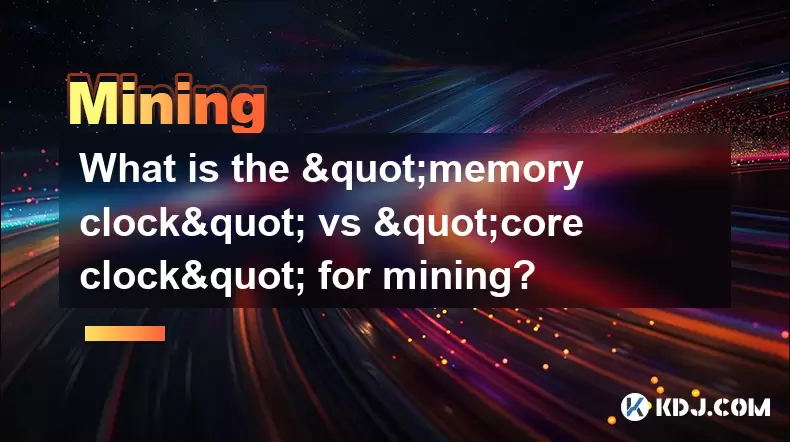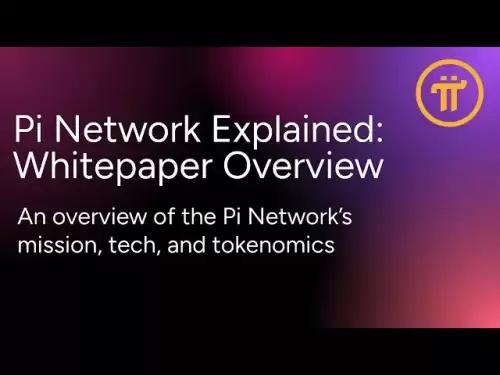-
 Bitcoin
Bitcoin $121,713.8152
3.06% -
 Ethereum
Ethereum $3,041.6437
2.42% -
 XRP
XRP $2.9499
5.12% -
 Tether USDt
Tether USDt $1.0000
-0.02% -
 BNB
BNB $704.1034
1.75% -
 Solana
Solana $166.7523
2.91% -
 USDC
USDC $0.9999
0.00% -
 Dogecoin
Dogecoin $0.2052
2.90% -
 TRON
TRON $0.3011
-0.47% -
 Cardano
Cardano $0.7461
1.42% -
 Hyperliquid
Hyperliquid $48.3650
1.12% -
 Stellar
Stellar $0.4548
3.52% -
 Sui
Sui $3.9527
14.50% -
 Chainlink
Chainlink $16.3300
5.87% -
 Bitcoin Cash
Bitcoin Cash $511.8016
1.25% -
 Hedera
Hedera $0.2395
1.40% -
 Avalanche
Avalanche $21.6526
2.06% -
 UNUS SED LEO
UNUS SED LEO $9.0073
-0.23% -
 Shiba Inu
Shiba Inu $0.0...01369
2.61% -
 Toncoin
Toncoin $3.0335
0.66% -
 Litecoin
Litecoin $96.6206
1.72% -
 Monero
Monero $355.1673
5.35% -
 Polkadot
Polkadot $4.0839
2.47% -
 Uniswap
Uniswap $9.3282
9.72% -
 Dai
Dai $0.9997
-0.01% -
 Ethena USDe
Ethena USDe $1.0004
-0.04% -
 Pepe
Pepe $0.0...01248
1.07% -
 Bitget Token
Bitget Token $4.4642
2.68% -
 Aave
Aave $325.0626
6.81% -
 Bittensor
Bittensor $418.1482
6.22%
What is the "memory clock" vs "core clock" for mining?
Optimizing GPU core and memory clocks can boost mining performance, but balancing stability, cooling, and hardware longevity is crucial for sustained profitability.
Jul 14, 2025 at 07:50 pm

Understanding the Basics of GPU Clock Speeds in Mining
When engaging in cryptocurrency mining, particularly with graphics processing units (GPUs), two critical metrics often come into play: memory clock and core clock. These terms refer to different aspects of a GPU’s performance and efficiency during mining operations. Understanding these parameters can significantly impact your mining profitability and hardware longevity.
The core clock, also known as the engine clock, dictates how fast the GPU processes data. It is measured in megahertz (MHz) or gigahertz (GHz) and directly influences the computational power of the GPU. A higher core clock generally means faster execution of tasks, which translates to more hashes per second when mining cryptocurrencies like Ethereum or Ravencoin.
On the other hand, the memory clock refers to the speed at which the GPU’s memory (VRAM) operates. This affects how quickly the GPU can access stored data, which is crucial for mining algorithms that require frequent memory reads and writes. For instance, the Ethash algorithm used by Ethereum relies heavily on high memory bandwidth.
The Role of Core Clock in Mining Performance
In mining scenarios, the core clock plays a pivotal role in determining hash rates. The GPU core is responsible for performing the mathematical computations required to validate transactions and add blocks to the blockchain. Increasing the core clock can lead to improved performance, but it also increases power consumption and heat output.
- Adjusting the core clock through software tools like MSI Afterburner or EVGA Precision X1 can help fine-tune performance.
- Overclocking the core may yield better hash rates, but stability must be tested to avoid crashes or errors.
- Undervolting while maintaining or slightly increasing the core clock can optimize power efficiency without sacrificing performance.
Each GPU model has its own optimal settings, so experimentation is key. However, pushing the core clock too high without adequate cooling can result in thermal throttling, which negates any potential gains.
How Memory Clock Affects Mining Efficiency
For many mining algorithms, especially those based on DAG files like Ethash, the memory clock is even more critical than the core clock. This is because these algorithms are designed to be memory-hard, meaning they require large amounts of VRAM accessed at high speeds.
- A higher memory clock improves memory bandwidth, allowing the GPU to fetch and process data more efficiently.
- In practice, increasing the memory clock often leads to noticeable improvements in hash rate, especially for NVIDIA GPUs mining Ethereum.
- However, not all memory types respond well to overclocking; GDDR5X and GDDR6 tend to have better headroom compared to older GDDR5.
It’s also important to note that certain mining software allows tuning of memory timings alongside the clock speed, which can further enhance performance.
Differences Between Core and Memory Clock Tuning Strategies
While both clocks influence mining performance, the strategies for optimizing them differ significantly. Here's how:
- Core clock adjustments typically focus on achieving stable, high-performance states without overheating. This involves balancing voltage and clock speed.
- Memory clock tuning requires attention to memory timings and error correction capabilities. Some memory modules are more tolerant of high clocks than others.
- When tweaking both simultaneously, it’s essential to test each change incrementally and monitor system stability using mining benchmarks or stress tests.
Some miners report that prioritizing memory clock over core clock yields better returns on specific algorithms. Others find a balanced approach works best. Experimentation and monitoring are necessary due to variations between hardware models and BIOS versions.
Tools and Techniques for Adjusting GPU Clock Speeds
Several tools allow users to adjust both core clock and memory clock settings for mining purposes:
- MSI Afterburner: One of the most popular utilities, offering real-time control over clock speeds, fan curves, and voltages.
- EVGA Precision X1: Another robust tool with similar functionality to Afterburner, preferred by some due to its interface and customization options.
- NVIDIA Inspector: Useful for advanced users who want to create custom profiles and tweak memory timings beyond standard tools.
Steps to safely adjust clock speeds:
- Ensure proper cooling and ventilation before starting.
- Launch your preferred tuning tool and identify current clock speeds.
- Increase either the core or memory clock in small increments (e.g., +10 MHz).
- Monitor temperatures, power draw, and stability after each adjustment.
- Test mining performance using software like NiceHash, Claymore, or PhoenixMiner.
Always save profiles once optimal settings are found to avoid repeating the process after system restarts.
Impact of Clock Settings on Mining Profitability and Hardware Longevity
Adjusting core clock and memory clock settings can directly affect both mining output and hardware lifespan. While higher clocks boost hash rates, they also increase wear and tear on components:
- Continuous operation at high clock speeds and voltages may shorten the life of the GPU.
- Proper cooling solutions, such as open-air cases or immersion cooling, can mitigate this risk.
- Monitoring tools like HWInfo64 can provide insights into real-time GPU health and performance metrics.
Balancing performance with reliability is crucial. Many experienced miners opt for conservative overclocking paired with undervolting to maintain high efficiency without excessive strain on the hardware.
Frequently Asked Questions
Q: Can I adjust both core and memory clocks simultaneously?
Yes, you can adjust both clocks at the same time, but it’s recommended to do so incrementally and test for stability after each change to avoid crashes or instability.
Q: Do all mining algorithms benefit equally from memory clock increases?
No, only memory-hard algorithms like Ethash or KawPow benefit significantly from increased memory clock speeds. Algorithms like SHA-256 (used in Bitcoin mining) rely more on ASIC-specific optimizations.
Q: Is there a risk of damaging my GPU by adjusting clock speeds?
If done responsibly—using small increments, ensuring proper cooling, and avoiding excessive voltage changes—the risk is minimal. However, reckless overclocking can potentially damage hardware.
Q: Should I prioritize core clock or memory clock when mining Ethereum?
For Ethereum mining using the Ethash algorithm, prioritizing memory clock usually results in better performance gains. However, a balanced approach tailored to your specific GPU model will yield the best results.
Disclaimer:info@kdj.com
The information provided is not trading advice. kdj.com does not assume any responsibility for any investments made based on the information provided in this article. Cryptocurrencies are highly volatile and it is highly recommended that you invest with caution after thorough research!
If you believe that the content used on this website infringes your copyright, please contact us immediately (info@kdj.com) and we will delete it promptly.
- XRP's Wild Ride: Implied Volatility and Potential Price Swings
- 2025-07-15 01:10:12
- Zebec Network: Decoding the Buzz Around ZBCN and Crypto Payments
- 2025-07-15 00:30:12
- LUNC Price Bullish Breakout Confirmed: Analyst Predicts 555% Surge!
- 2025-07-15 00:30:12
- Trump, Bitcoin, and Reserves: A New Era for Crypto?
- 2025-07-14 22:50:11
- Bitcoin's Wild Ride: All-Time Highs and Crypto Week Mania!
- 2025-07-14 23:10:12
- Bitcoin's Wild Ride: Coin Surge and Fintech Experts Weigh In
- 2025-07-14 23:10:12
Related knowledge

How are crypto mining profits taxed?
Jul 14,2025 at 12:28am
Understanding Cryptocurrency Mining and TaxationCryptocurrency mining involves validating transactions on a blockchain network and earning rewards in ...

How to keep a mining rig cool
Jul 12,2025 at 01:42pm
Understanding the Importance of Cooling in Mining RigsCryptocurrency mining is an intensive process that places heavy demand on hardware components, p...

How much does it cost to start crypto mining?
Jul 13,2025 at 12:22am
Understanding the Basic Costs of Crypto MiningStarting crypto mining involves several upfront and ongoing expenses. The primary costs include hardware...

What is the most profitable crypto to mine?
Jul 13,2025 at 07:00am
Understanding Mining Profitability in CryptocurrencyWhen evaluating the most profitable crypto to mine, it's essential to consider several factors tha...

What do I need to start mining crypto?
Jul 13,2025 at 12:28am
Understanding the Basics of Crypto MiningCrypto mining is the process by which transactions are verified and added to a blockchain, and new coins are ...

How does crypto mining work?
Jul 13,2025 at 11:01am
Understanding the Basics of Crypto MiningCrypto mining is the process through which new cryptocurrency coins are introduced into circulation and trans...

How are crypto mining profits taxed?
Jul 14,2025 at 12:28am
Understanding Cryptocurrency Mining and TaxationCryptocurrency mining involves validating transactions on a blockchain network and earning rewards in ...

How to keep a mining rig cool
Jul 12,2025 at 01:42pm
Understanding the Importance of Cooling in Mining RigsCryptocurrency mining is an intensive process that places heavy demand on hardware components, p...

How much does it cost to start crypto mining?
Jul 13,2025 at 12:22am
Understanding the Basic Costs of Crypto MiningStarting crypto mining involves several upfront and ongoing expenses. The primary costs include hardware...

What is the most profitable crypto to mine?
Jul 13,2025 at 07:00am
Understanding Mining Profitability in CryptocurrencyWhen evaluating the most profitable crypto to mine, it's essential to consider several factors tha...

What do I need to start mining crypto?
Jul 13,2025 at 12:28am
Understanding the Basics of Crypto MiningCrypto mining is the process by which transactions are verified and added to a blockchain, and new coins are ...

How does crypto mining work?
Jul 13,2025 at 11:01am
Understanding the Basics of Crypto MiningCrypto mining is the process through which new cryptocurrency coins are introduced into circulation and trans...
See all articles

























































































